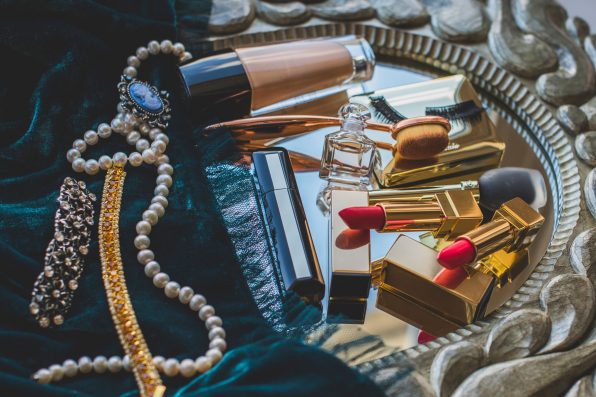History Has Witnessed Dozens Of Dangerous Fashion Trends, From Toxic Lead-Filled Cosmetics To Hats Made With Mercury

The world has certainly seen its fair share of dangerous fashion and makeup trends. Many people desired to be beautiful, but they did so at a great cost.
From toxic cosmetics laced with lead to shoes that hindered the ability to walk, such trends show the lengths people were willing to go when it came to style and beauty.
At the time, they may have been popular, but that doesn’t mean they were healthy or safe. These practices posed major health risks. Today, they serve as a reminder of how important it is to have safety guidelines for fashion and beauty products.
Here are a few historical but hazardous fashion trends.
Kohl Eye Liner
Throughout Africa, India, Pakistan, and the Middle East, kohl was used as an eyeliner during ancient times. In ancient Egypt, it was believed that kohl protected their eyes from sand, heat, and various diseases.
Egyptians of all social classes used kohl, and the nobility used a higher-quality product, of course. They applied kohl by wetting it with saliva and painting it in lines around their eyelids.
Kohl was dangerous because it contained lead. Over time, the exposure to lead became toxic. Wearers of kohl eyeliner can experience lead poisoning, especially since the eye membranes lead directly into the body.
It can cause symptoms such as anemia, muscle/joint pain, headaches, fertility issues, seizures, neurological damage, coma, and death. Blindness and eye infections were also high possibilities.

T.Den_Team – stock.adobe.com – illustrative purposes only
Venetian Ceruse
Venetian ceruse was a mixture of water, vinegar, and powdered white lead. It was used to achieve a pale white look. It was made popular by European aristocracy, particularly Queen Elizabeth of England.
She applied Venetian ceruse to get the porcelain skin that she was famous for. The thick white makeup was used from the 16th to 19th centuries and conveyed that the wearer was wealthy enough not to have to work outdoors and develop a tan in the sun.
If Queen Elizabeth I or any other Venetian ceruse wearers experienced any side effects, they may have faced hair loss, anemia, headache, abdominal pain, nausea, high blood pressure, and skin discoloration due to lead poisoning.
The solution to their worsening skin would be to apply more Venetian ceruse to cover up any blistering, peeling, or scarring.
Some more extreme side effects include mental impairment, muscle paralysis, convulsions, and eventually death.
Belladonna Eye Drops
Belladonna is a plant that was used to make pupils look bigger in Renaissance Italy. It would give women the appearance of “doe eyes.” The trend was quickly adopted by other Western European countries. However, belladonna is extremely toxic.
The plant is native to Europe and Western Asia, including Turkey. It has purple bell-shaped flowers tinged with green. All parts of the plant are toxic and can be fatal if ingested.
Belladonna eye drops would cause blurry vision, eye irritation, increased heart rate, and temporary blindness. More serious side effects include convulsions, heart damage, mental disturbances, heart damage, and death.
The plant can stop breathing, sweating, and heartbeat. Despite its deadliness, belladonna is still used today for various medicinal purposes but only in very small, precise amounts.
Chopines
These women’s shoes were created in the early 1500s in Venice. Chopines featured large platforms that added several inches to the wearer’s height. They were made of wood or cork and were meant to protect the feet from uneven roads and muddy streets.
They were often covered in gold or silk and reached up to 20 inches in height. The height of the shoes indicated wealth and high status. The impractical shoes showed that the wearer was not expected to participate in any labor.
The excessive height and decoration of chopines made them difficult to walk in, especially when they were paired with long dresses. People who wore chopines actually needed servants to help them walk around. Many people ended up with broken bones, which could lead to death from infections if they weren’t properly taken care of.
Mercury Hats
In the 17th century, the purpose of hats began to evolve from something that protected their wearer from the elements to indicating social status and making a fashion statement.
Hats were commonly made from felt, and the felt involved the use of animal hairs removed from their hides. The hairs were heated, moistened, and heated up again.
French hat makers discovered that mercury softened the hairs, making them more pliable. The practice quickly spread to other Western European countries, as the results of using mercury were highly successful.
The practice was banned in the 1940s due to mercury poisoning. Consistent exposure to mercury caused headaches, weakness, tremors, irritability, and mental instability. This is where the name Mad Hatter’s disease was coined.
Sign up for Chip Chick’s newsletter and get stories like this delivered to your inbox.
More About:Freaky





